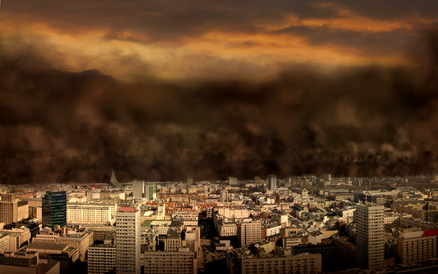 Rapture. Apocalypse. Doomsday. So many terms, all referencing one event: The End of the World. After 9/11, the popularity of survivalism became a fixture in modern society and millions of Americans began stocking up on not only food, water and emergency equipment, but also firearms and ammunition. As reported by the New York Times in December of 2001, gun sales increased 21 percent in the three months following the attacks.
Rapture. Apocalypse. Doomsday. So many terms, all referencing one event: The End of the World. After 9/11, the popularity of survivalism became a fixture in modern society and millions of Americans began stocking up on not only food, water and emergency equipment, but also firearms and ammunition. As reported by the New York Times in December of 2001, gun sales increased 21 percent in the three months following the attacks.
Some say zombies, others predict an economic collapse, but no matter how the world comes to its inevitable end, you don’t want to find yourself unprepared for the chaos and panic that is sure to follow. So when the day comes…how prepared will you be?
First: Know the Lingo
Preppers love acronyms and that doesn’t mean OMG and LOL. Below is a list compiled by TheHomeForSurvival.com, of common acronyms and the corresponding definitions. It’s recommended that new preppers get familiar with these terms as part of your prepping education.
- (W)SHTF: (When) Sh*t Hits The Fan
- TEOTWAWKI: The End Of The World As We Know It
- GOOD: Get Out Of Dodge
- Prepper: One who is planning or preparing for a disaster/emergency
- BOB: Bug Out Bag (one small bag you can grab with essentials if you have to leave your place immediately) aka SHTF Bag
- BOL: Bug Out Location
- WROL: Without Rule Of Law
- MRE: Meal Ready to Eat
- SP: Survival Prepping
Additionally, SHTFplan.com shared a post on what the survivalist community calls ‘The Rule of Three’ stating, “…your survival is generally contingent upon you not exceeding [the following]…”
- 3 minutes without breathing (drowning, asphyxiation)
- 3 hours without shelter in an extreme environment (exposure)
- 3 days without water (dehydration)
- 3 weeks without food (starvation)
Next: Start Stocking
In a five-part article series titled Prepping 101, The Prepper Journal highlights the first and foremost items to gather (”…assuming for a minute that you can breathe and have or can obtain shelter easily”) as water, food and firearms. The series also lists financial planning, medical supplies, backup power and home security as essentials in your WSHTF plan.
Important note: While firearms and weapons are an important part of prepping, any survivalism expert will tell you that knowledge of proper firearm assembly, disassembly and safety is not to be disregarded. This means that gunsmith training can come in handy. If you’ve hit a brick wall scourging through apocalpyse-hyped Youtube videos while trying to find gun skills on the web, it may help to take a course or two. Penn Foster offers a gunsmith training dilpoma, as a skilled trade. It may not be required to acquire these skills, but when it comes down to it, you can never be too prepared.
…But it’s Not Just About the Supplies
Another crucial step in preparing for disaster is general organization. The creator of GrayWolfSurvival.com, a military veteran who served in Iraq and Afghanistan and has nearly 30 years of experience as a survivalist, says that deciding who is included in your plan is a necessary part of preparation. Graywolf also advises preppers to be more health-conscious, saying, “People who are in shape statistically survive emergency situations more often. If you’re in shape, you won’t require as many medicines, you’ll be able to walk farther with more weight, and you’ll better be able to defend yourself.”
by Alex Cutter
A few years back, Alex’s dad brought home a fully restored, souped-up 1964 Mustang Coupe, and Alex was in love. When he’s not working on a car, he’s blogging about the automotive industry.



[…] Tips for the New Doomsday Prepper […]